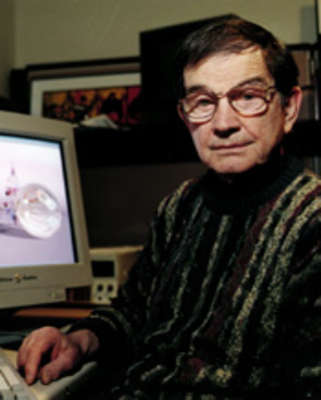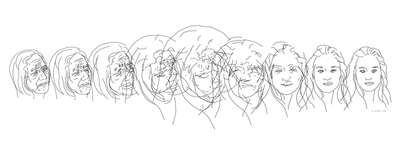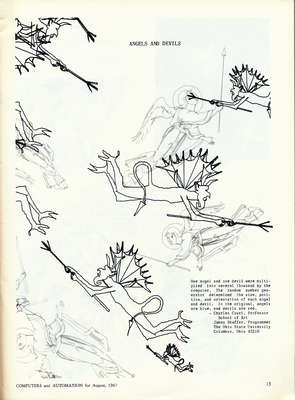Charles A. Csuri is an artist, a computer graphics pioneer and a Professor Emeritus, at The Ohio State University. He has been experimenting with computer graphics technology since 1963 and by 1965 had started creating computer animated films, most well known of which is the ‘Hummingbird’ from 1967, purchased by the Museum of moder Art, New York.
The 4th International Experimental Film Festival, Brussels, Belgium, 1967, awarded him the prize for animation. His work was highlighted in the exhibition Cybernetic Serendipity held at The Institute for Contemporary Art, London, England, 1968.
With support from the National Science Foundation (NSF), he directed basic research in computer graphics for over 22 years which generated 15 major projects and engaged more than forty graduate students in computer science and over fifty students from the field of art in the research. The results of the research have been applied to flight simulators, computer-aided design, visualization of scientific phenomena , magnetic resonance imaging, education for the deaf, architecture, and special effects for television and films.
Csuri’s recurring themes that have effected his “creative partnership” with the computer in exploring the aesthetic object include object transformation, randomness, collaboration and hierarchical levels of control.
Media art history texts have always featured Csuri’s early works as important examples computer generated art. Siggraph has also offically recognized him as a computer graphics pioneer. He has been referred to as the “master of the digital renaissance” for his skillful blending of fine arts and science by Karla Loring.
The Charles A. Csuri Collection is located in the Advanced Computing Center for the Arts and Design (ACCAD), College of the Arts, The Ohio State University which also maintains a biographical website – CsuriProject.
Early works of Charles Csuri are in the collections of Joe Ferrer, Roy Lichtenstein and Georg Segal.











